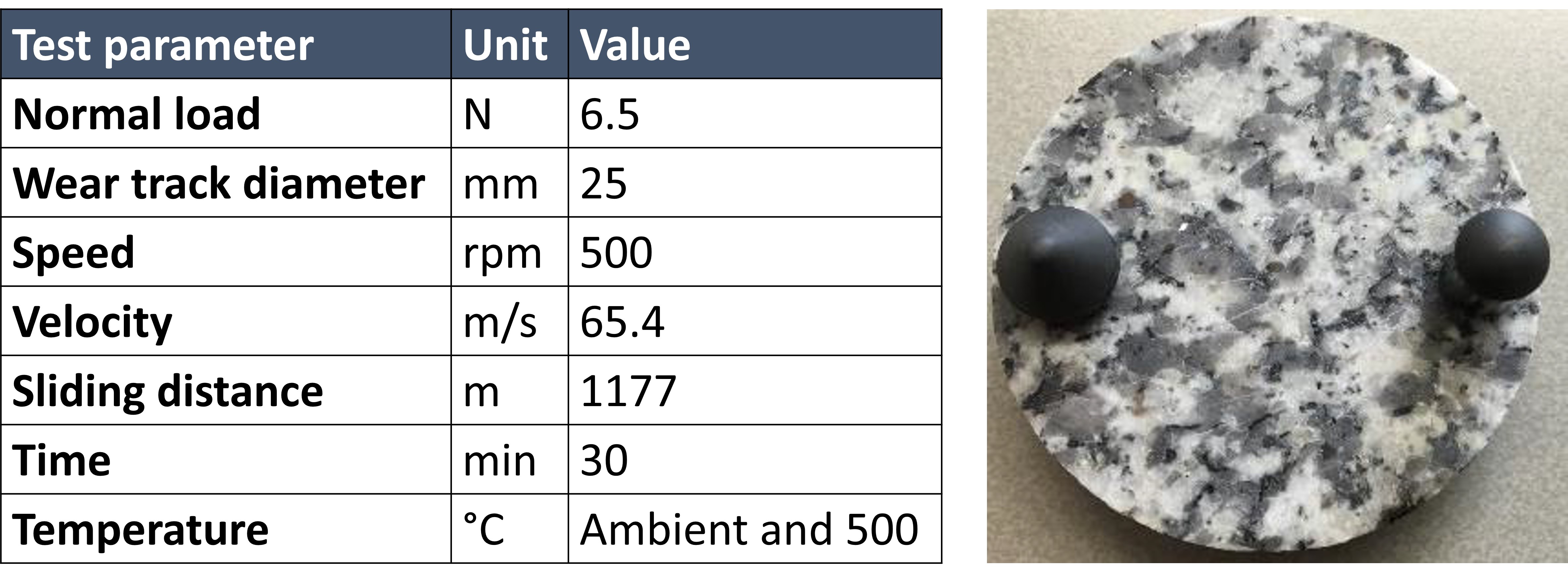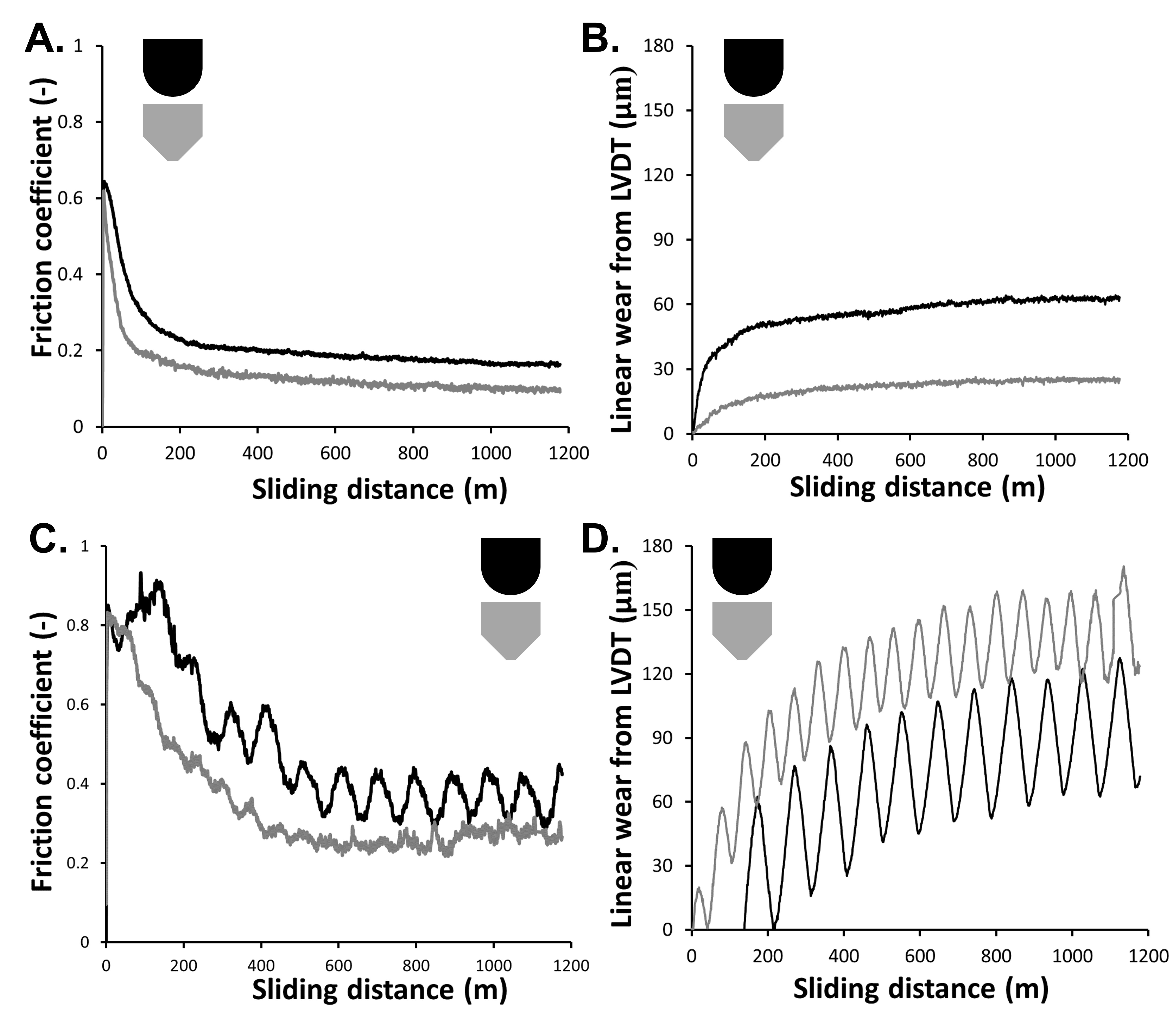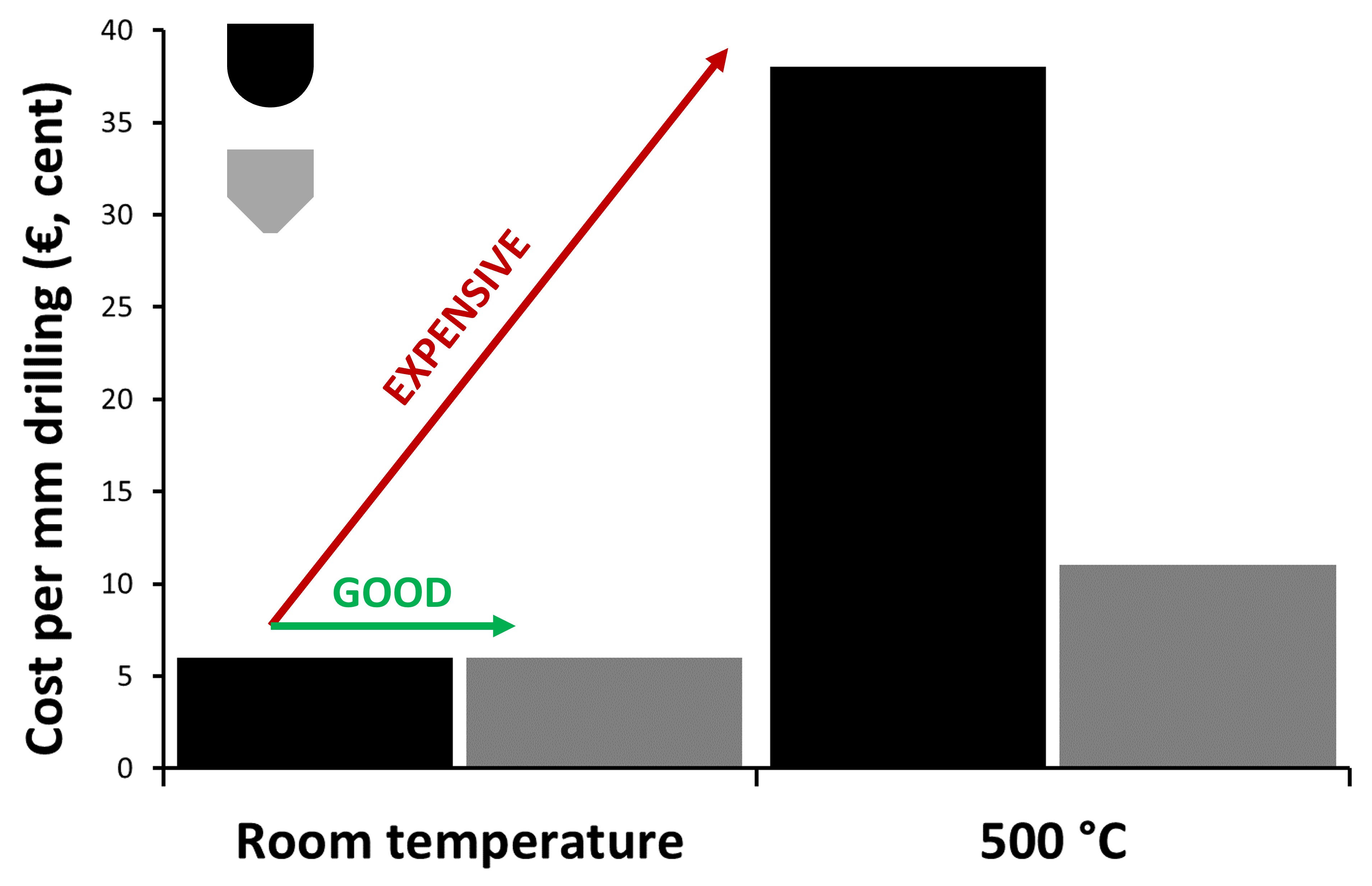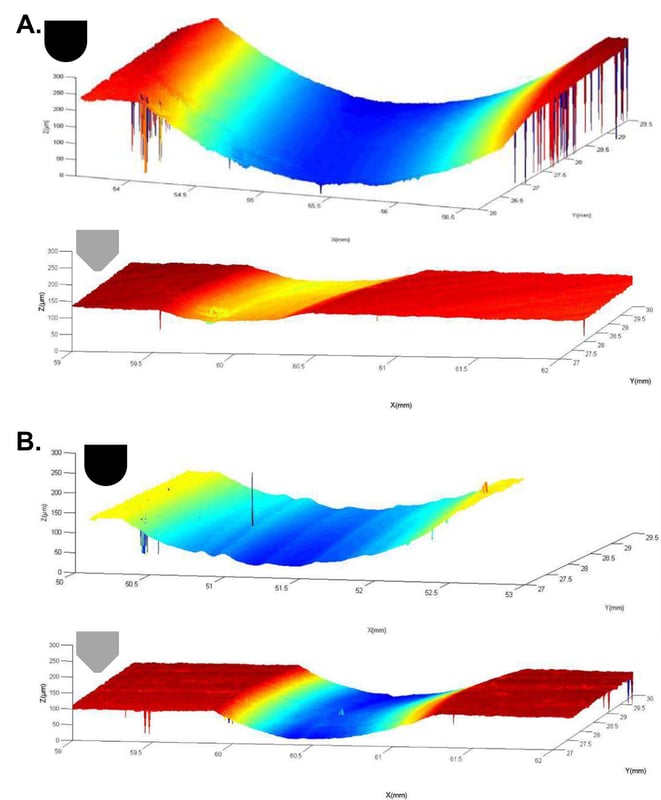
Tool wear during the drilling and cutting process will reduce the productivity and profitability in mining companies. There is a need for research and development of ultimate wear resistant tool bits. Tool wear will increase the downtime (change the tool), reduce the shear rate (low penetration), increase the vibration and inflict damages to the machine and the operator. This increases the cost associated per meter of drilling or cutting.
Tool bits with synthetic diamonds can reduce the cost per meter of drilling. The shape of the drill bit can also have an effect on the total cut into rocks per meter of drilling. Conical shape can exert high contact pressure compared to hemispherical. However, hemispherical shape can contain more third body wear particles that exert high stress.
Ducom Multi Capability Tribometer - POD 4.0 (see Figure 1) was used to investigate friction and wear of conical and hemispherical tool bits coated with polycrystalline diamonds (PDC).
/Videos%20and%20Images/Applications%20and%20Blogs/POD%204.0/POD%204.1_schematic.jpg?width=2000&name=POD%204.1_schematic.jpg) Figure 1. Ducom Multi Capability Tribometer (POD 4.0) with rotary and linear modules.
Figure 1. Ducom Multi Capability Tribometer (POD 4.0) with rotary and linear modules.
The diamond tool bits were sheared against a granite stone at ambient temperature and at 500 °C.
Table 1. Test parameters used in Ducom POD 4.0. Granite disk, PCD pins with conical shape (left) and hemispherical shape (right).
RESULTS | FRICTION AND WEAR OF DIAMOND TOOL
 Figure 2. Friction coefficient (A) and linear wear (B) as a function of sliding distance for hemispherical and conical PCD pin against granite disk at room temperature; Friction coefficient (C) and linear wear (D) as a function of sliding distance for hemispherical and conical PCD pin against granite disk at 500°C.
Figure 2. Friction coefficient (A) and linear wear (B) as a function of sliding distance for hemispherical and conical PCD pin against granite disk at room temperature; Friction coefficient (C) and linear wear (D) as a function of sliding distance for hemispherical and conical PCD pin against granite disk at 500°C.
Generally, an increase in wear reduces the friction (see Figure 2). At high temperature (500 °C) the hemispherical pin experienced more damage compared to conical pins. This could result in three times more drilling cost. In the case of tests at room temperature the hemispherical and conical pins behaved the same.
 Figure 3. Optical images of semispherical and conical PCD pins at (A) room temperature and (B) 500 °C. (C) Scanning electron microscopy of semispherical PCD pins at room temperature (RT) and 500 °C.
Figure 3. Optical images of semispherical and conical PCD pins at (A) room temperature and (B) 500 °C. (C) Scanning electron microscopy of semispherical PCD pins at room temperature (RT) and 500 °C.
This accelerated wear test show that diamond tool bits sheared against granite stone has high friction and low penetration at 500 °C. We attribute it to an increased tool wear followed by few third body abrasive particles at tool - granite interface.  Figure 4. Estimation of the economic savings using conical pins over hemispherical pins. This prediction was made using friction and wear data from Ducom Rotary Tribometer.
Figure 4. Estimation of the economic savings using conical pins over hemispherical pins. This prediction was made using friction and wear data from Ducom Rotary Tribometer.
Our result challenges and offers opportunity to improve the behavior of synthetic diamond based tool bits. Eventually this research will led to high productivity in mining.
 Figure 5. White light interferometry (3D non-contact optical profilometer) of the wear track in the granite disks at room temperature (A) and 500 °C (B) against hemispherical-PCD pins (top) and conical- PCD pins (bottom).
Figure 5. White light interferometry (3D non-contact optical profilometer) of the wear track in the granite disks at room temperature (A) and 500 °C (B) against hemispherical-PCD pins (top) and conical- PCD pins (bottom).
These Stories on high temperature
USA: +1 (847) 737-1590
India: +91 (80) 4080-5555
Netherlands: +31 (85) 065 74 10